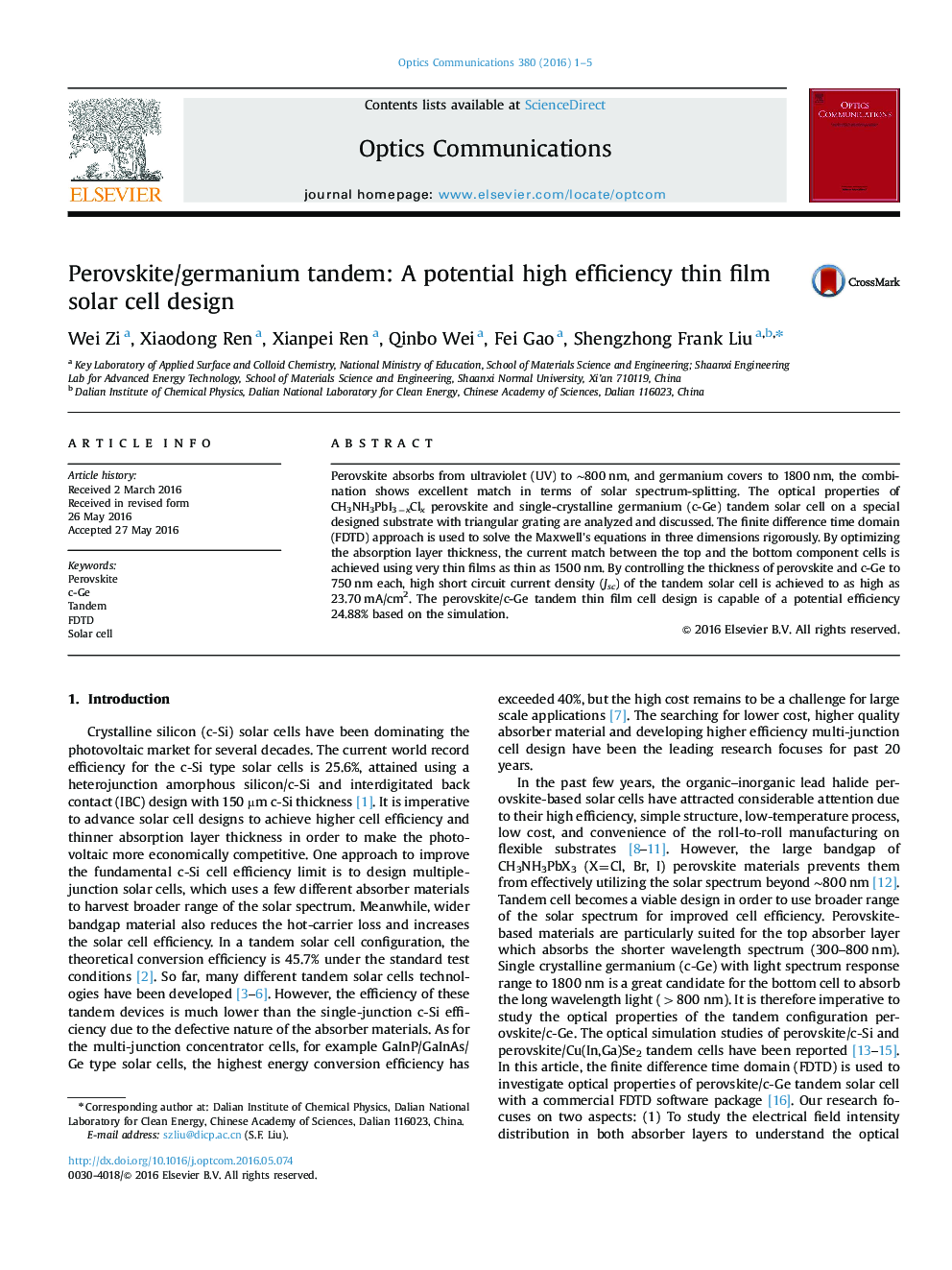| Article ID | Journal | Published Year | Pages | File Type |
|---|---|---|---|---|
| 1533072 | Optics Communications | 2016 | 5 Pages |
Abstract
Perovskite absorbs from ultraviolet (UV) to â¼800Â nm, and germanium covers to 1800Â nm, the combination shows excellent match in terms of solar spectrum-splitting. The optical properties of CH3NH3PbI3âxClx perovskite and single-crystalline germanium (c-Ge) tandem solar cell on a special designed substrate with triangular grating are analyzed and discussed. The finite difference time domain (FDTD) approach is used to solve the Maxwell's equations in three dimensions rigorously. By optimizing the absorption layer thickness, the current match between the top and the bottom component cells is achieved using very thin films as thin as 1500Â nm. By controlling the thickness of perovskite and c-Ge to 750Â nm each, high short circuit current density (Jsc) of the tandem solar cell is achieved to as high as 23.70Â mA/cm2. The perovskite/c-Ge tandem thin film cell design is capable of a potential efficiency 24.88% based on the simulation.
Keywords
Related Topics
Physical Sciences and Engineering
Materials Science
Electronic, Optical and Magnetic Materials
Authors
Wei Zi, Xiaodong Ren, Xianpei Ren, Qinbo Wei, Fei Gao, Shengzhong Frank Liu,
